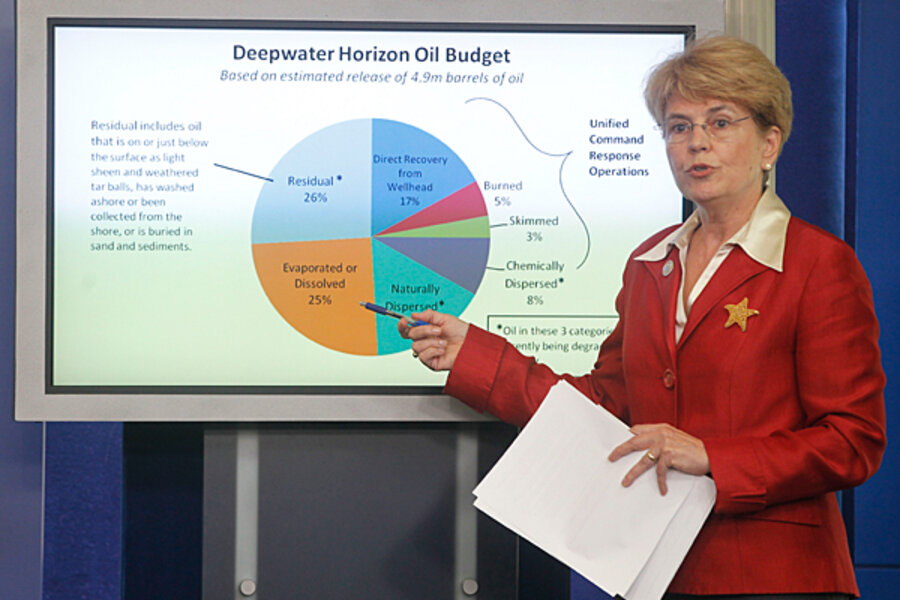Gulf oil spill not 'gone' -- close to half may still lurk in Gulf
Loading...
The public summary of a new federal report on the fate of the oil that poured into the Gulf of Mexico following the Deepwater Horizon explosion and blowout suggests that close to half the oil from the disaster may still lurk in some form in the ocean, sand, and sediment.
Earlier today, President Obama's environmental adviser, Carol Browner, told NBC's "Today Show" that "the vast majority of the oil is gone. It was captured. It was burned. It was skimmed. It was contained. And mother nature did her part" through bacteria breaking down oil.
But the "vast majority" includes dispersed oil. The summary released Wednesday does not make clear the rate at which bacteria are degrading that oil. Researchers are still trying to assess this process – especially in the deep ocean, where much of the remaining oil is thought to be.
According to the five-page federal estimates, some 25 percent of the oil was recovered, burned, or skimmed. Another 25 percent evaporated or dissolved.
Meanwhile, 24 percent remains dispersed in the water, while another 26 percent falls into a catch-all "residual" category.
That includes oil sheen on the surface, weathered tar balls, oil that has been collected from shorelines, as well as oil that has seeped into sand and sediments, where under the right conditions it can have long-lasting ecological effects.
The report, released today, does not assign an amount of oil to these residual categories, noting that the overall figure "is a combination of categories all of which are difficult to measure or estimate."
Some in the marine science community are looking askance at the report, in essence a preliminary estimate.
"This is a shaky report. The more I read it, the less satisfied I am with the thoroughness of the presentation," Florida State University oceanographer Ian MacDonald told The Associated Press. "There are sweeping assumptions here."
Between April 20, when the blowout occurred, and July 15, when BP capped the well, some 4.9 million barrels of oil – give or take 10 percent – poured into the Gulf. That's nearly 2 million barrels more than the Ixtoc 1 blow-out in the Gulf of Campeche in 1979, the region's biggest offshore-oil disaster until the Deepwater Horizon blow-out.
The report notes that bacteria have been breaking down oil. Chemical dispersants and the atomizing effect of oil leaving the broken well pipe at high pressure have in effect chopped much of the oil into bite-sized pieces for the microbes.
Breakdown process -- both biological and chemical -- can work relatively quickly near the surface, where temperatures are warm. But marine scientists have noted that the process is likely to proceed more slowly at much colder depths of from 3,300 to 4,300 feet, where clouds of dilute oil droplets have been detected.
Bacteria deep in the Gulf are accustomed to eating oil; the sea floor hosts natural petroleum seeps. But little research has been done to characterize the pace at which marine microbes at those depths are able to break down oil, several researchers say. The logistics and the high expenses for such research are daunting.
The report cautions that "dispersion increases the likelihood that the oil will be biodegraded, both in the water column and at the surface." But until it's been fully broken down, "naturally or chemically dispersed oil, even in dilute amounts, can be toxic to vulnerable species."
Related:





